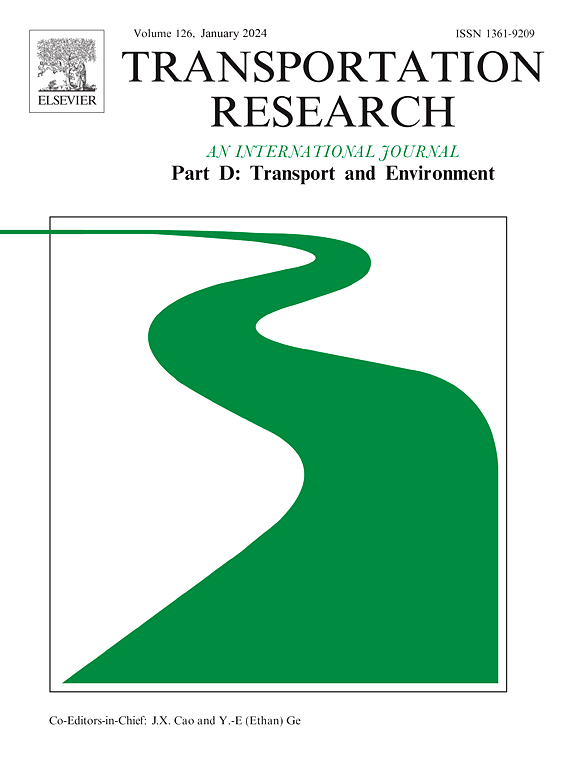Revealing considerable emissions reduction potential in flight operations: A real-time emission perspective
IF 7.3
1区 工程技术
Q1 ENVIRONMENTAL STUDIES
Transportation Research Part D-transport and Environment
Pub Date : 2025-04-15
DOI:10.1016/j.trd.2025.104745
引用次数: 0
Abstract
Accurately estimating aviation emissions is crucial for developing strategies to mitigate environmental impacts. However, aircraft’s unique four-dimensional operation characteristics and limitations in aircraft-to-ground communication technology pose challenges for precise and dynamic emissions estimation. This study proposed a hybrid machine learning approach for real-time aviation emissions estimation based on four-dimensional flight trajectories. Using Qingdao Airport as a case study, we generated a high-resolution emission inventory and explored the emission reduction potential in flight operations. Results demonstrated that: (1) our approach achieved higher prediction accuracy for real-time fuel flow rates and emissions than conventional models, owing to a comprehensively considering the nonlinear relationships between aircraft performance and trajectories under complex operating conditions; (2) emission estimation results from our approach were 22 %−78 % higher than the ICAO reference values; (3) an emission reduction potential of 5 %−65 % was identified in flight operations. Finally, four policy recommendations were developed to reduce emissions from airport flight activities.

揭示飞行操作中可观的减排潜力:实时排放视角
准确估计航空排放对于制定减轻环境影响的战略至关重要。然而,飞机独特的四维操作特性和飞机对地通信技术的局限性给精确和动态的排放估算带来了挑战。本研究提出了一种基于四维飞行轨迹的混合机器学习实时航空排放估计方法。以青岛机场为例,生成了高分辨率的排放清单,并探索了航班运营中的减排潜力。结果表明:(1)该方法综合考虑了复杂工况下飞机性能与飞行轨迹之间的非线性关系,实现了比传统模型更高的实时燃油流量和排放预测精度;(2)估算结果比ICAO参考值高22% ~ 78%;(3)在飞行操作中确定了5% - 65%的减排潜力。最后,制定了四项政策建议,以减少机场飞行活动的排放。
本文章由计算机程序翻译,如有差异,请以英文原文为准。
求助全文
约1分钟内获得全文
求助全文
来源期刊
CiteScore
14.40
自引率
9.20%
发文量
314
审稿时长
39 days
期刊介绍:
Transportation Research Part D: Transport and Environment focuses on original research exploring the environmental impacts of transportation, policy responses to these impacts, and their implications for transportation system design, planning, and management. The journal comprehensively covers the interaction between transportation and the environment, ranging from local effects on specific geographical areas to global implications such as natural resource depletion and atmospheric pollution.
We welcome research papers across all transportation modes, including maritime, air, and land transportation, assessing their environmental impacts broadly. Papers addressing both mobile aspects and transportation infrastructure are considered. The journal prioritizes empirical findings and policy responses of regulatory, planning, technical, or fiscal nature. Articles are policy-driven, accessible, and applicable to readers from diverse disciplines, emphasizing relevance and practicality. We encourage interdisciplinary submissions and welcome contributions from economically developing and advanced countries alike, reflecting our international orientation.

 求助内容:
求助内容: 应助结果提醒方式:
应助结果提醒方式:


